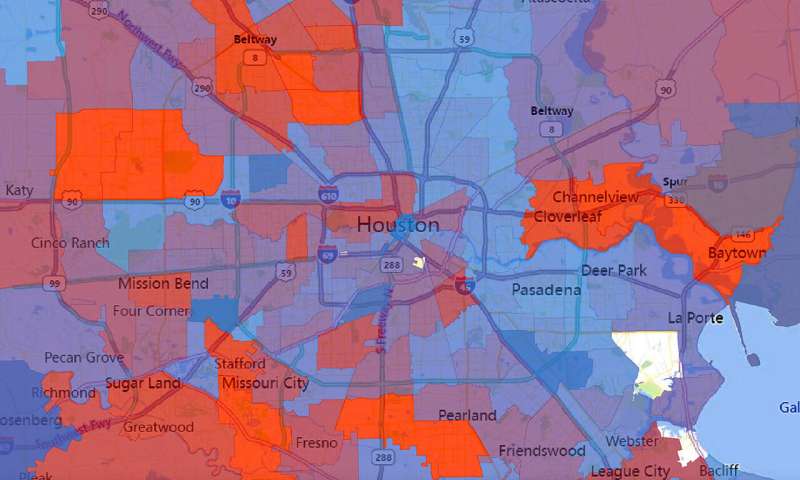The COVID infection fatality ratio is around 1% in high-income countries, but substantially lower in low-income countries with younger populations.
These are the findings of a new report from the Imperial College London COVID-19 Response Team.
The report reveals that:
- In high income countries, the estimated overall infection fatality ratio (IFR) is 1.15% (95% prediction interval 0.78-1.79).
- In low-income countries, the estimated overall IFR is 0.23% (95% prediction interval 0.14-0.42).
- Risk of death from COVID-19 doubles for approximately every eight years of aging.
- Age-specific IFRs increased from 0.1% and below for individuals under 40 years to greater than 5% among individuals over 80 years.
The infection fatality ratio (IFR) is a key statistic for estimating the burden of COVID-19 and has been continuously debated throughout the current pandemic.
This ratio represents the proportion of deaths among all infected individuals.
This report covers a screening of 175 studies and identified 10 antibody surveys to obtain updated estimates of the IFR using a modeling framework.
This specific framework addresses several limitations of previous estimates which have relied on data early in the epidemic, and have not fully accounted for uncertainty in serological (antibody) test characteristics, and delays from onset of infection to seroconversion (specific antibody becoming detectable in the blood), death, and antibody waning.
The researchers find that age specific IFRs follow a pattern, with the risk of death doubling approximately every eight years of age.
Age-specific IFRs increased from 0.1% and below for individuals under 40 years to greater than 5% among individuals over 80 years
Using these age-specific estimates, the team estimates the overall IFR in a low-income country, with a population structure skewed towards younger individuals, can be expected to be approximately 0.23% (95% prediction interval 0.14-0.42).
In contrast, in high income countries, with a greater concentration of elderly individuals, the report estimates that the overall IFR can be expected to be approximately 1.15% (95% prediction interval 0.78-1.79).
In addition, the report takes seroreversion into account. Seroreversion is the waning of antibodies, leading to a negative serological result in people who were previously infected with coronavirus and would have tested positive at an earlier time.
Not accounting for seroreversion can overestimate the IFR among serosurveys conducted longer after the first wave of the outbreak (such as Italy), because we would underestimate the true number of people who had been infected.
New treatments for COVID-19
Researchers explain that it will be important to continue to monitor the IFR as new treatments are introduced and population immunity increases.
The study did not find a large effect of possible waning of antibodies on our IFR estimates at the times the serosurveys were done, but it will become increasingly important to account for potential declines in antibody levels to avoid overestimating the IFR in future.
In addition, the researchers did not find evidence that the IFR was higher in regions with larger epidemics.
The report publishes estimates for IFR per age group without seroreversion and with seroreversion, in addition to overall IFR for low income countries, low to middle income countries, upper middle-income countries and high-income countries.
The work is presented in the latest report from the WHO Collaborating Center for Infectious Disease Modeling within the MRC Center for Global Infectious Disease Analysis, Jameel Institute (J-IDEA), Imperial College London.
Since the emergence of the new coronavirus (COVID-19) in December 2019, the Imperial College COVID-19 Response Team has adopted a policy of immediately sharing research findings on the developing pandemic.
The code for reproducing these results is available on GitHub.
COVID-19 has high fatality rate
Dr. Lucy Okell, a co-author of the study from Imperial College London, said: "Although the elderly are by far at the highest risk of dying due to COVID-19, the risk in middle age is still high. For example, we estimate that around one in 260 people aged 50-55 years die if infected. We calculated COVID-19 fatality largely based on the first wave of the epidemic in a number of countries and we hope and expect to see some reduction in fatality now due to new clinical knowledge and treatment, but this remains a dangerous virus."
Dr. Nicholas Brazeau, a co-author of the study from Imperial College London, said: "Estimates of the IFR are difficult given the many biases of data collected during an outbreak. Using a statistical model, we partly reconcile these biases and help to explain country-specific differences. Overall, we suggest that age differences will have the largest effects, as regions that were hit hardest by the pandemic did not necessarily have higher IFRs."
Dr. Robert Verity, a co-author of the study from Imperial College London, said: "We know that antibody tests are not perfect, and there may be a considerable number of people who do not mount a detectable antibody response to SARS-CoV-2. However, even when this uncertainty is taken into account, we still find that COVID-19 has a high fatality rate—on the order of 1% for a typical high-income country. This risk is concentrated in older ages, with the probability of dying from COVID-19 doubling approximately every eight years."
More information: The full report is available online: imperial.ac.uk/mrc-global-infe … 19/covid-19-reports/
https://medicalxpress.com/news/2020-10-covid-deaths-infection-fatality-ratio.html
